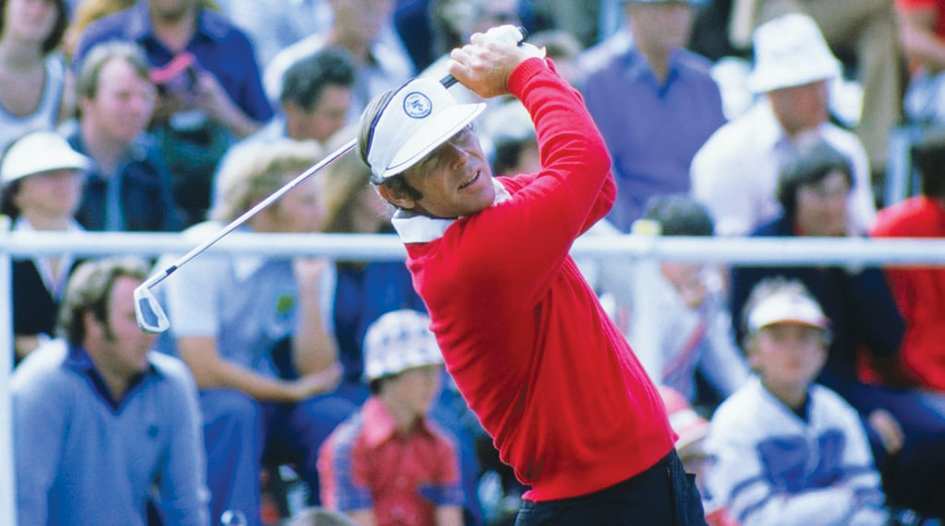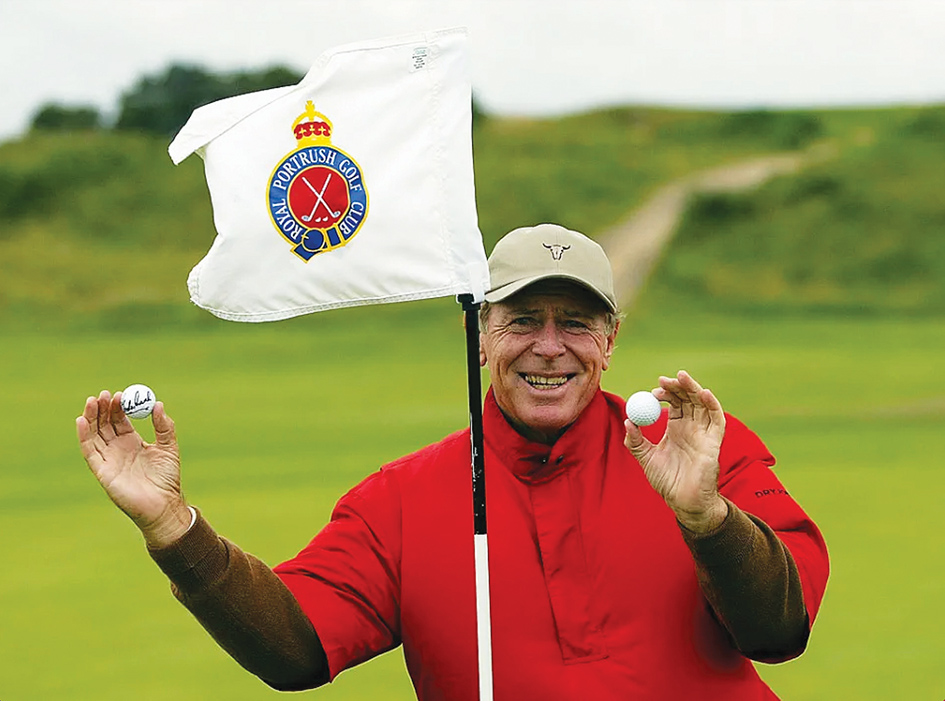AT 81, Graham Marsh, one of the country’s genuine trail blazing international golfers and hugely successful course architect, is back in Australia and living in Melbourne enjoying the company of his two daughters and his five grandchildren.
“Whether it’s for the next five or 10 years, who knows? My two daughters, Jenni and Stephanie live here. The grandkids (aged four to 22) are fantastic and we look after the four-year-old every Wednesday. We’re loving it,” he says.
He’s also going to try to play more golf and has been spotted at Royal Melbourne playing with his friend Charlie Baillieu.
“I am also hoping to play at Huntingdale because I’m a life member after winning the (Australian) Masters there. But that can’t happen until the renovation is finished.”
Marsh is particularly enjoying watching his grandson, Gus Hurst, 17, playing pennant for Royal Melbourne.

Graham Marsh, a legend of Australian golf.
“What golf gives you at a young age is a different perspective on life. You are mixing with adults – male and female – and there are certain ways they influence you whether by osmosis or directly. There are rules and etiquettes on how you behave. It can help you for the rest of your life not matter what you go on to do.”
Marsh says playing with adults from the age of 15 back in his home state of WA certainly taught him disciplines which helped him cope with the travails of being a genuine world player.
“When I came along, very few players had genuinely played all over the world. Peter Thomson and Kel Nagle certainly had. As did Frank Phillips and Bruce Crampton. David Graham played mainly in the US. But those players were all from the east coast (of Australia). I came from WA. In 1970, we were a golfing outpost really.
“I had no idea if I would make it. I was a school teacher and sold insurance along the way to make ends meet.”
But when he did make it, he was determined to travel.
“At one stage there I played 17 tournaments on five continents in 17 weeks.”
Marsh doffs his lid to Greg Norman in this regard.
“He played everywhere,” he says.
Of course, any mention of the Shark brings us to the vexed question of LIV golf and just where it may land by the time the dust settles.
“Peter Thomson once told me when I took over from him as chairman of the Australian PGA that very few sponsors stay in the game for longer than three to five years. There has to be a quid pro quo: the game has to get something from the sponsor and that is money. But in return the sponsor has to be getting value from the game in the form of entertainment and connection with customers.
“I don’t see that happening with LIV,” Marsh says.
“Time will tell. But to me, getting out on the golf course, drinking beer, yahooing and yelling, is not golf. That’s not the game. If people want to do it, that’s their choice. I don’t think it’s sustainable. It’s a novelty.
“And let’s face it the USPGA has been a very successful model for a very long time. Players have been extremely well paid, and hospitals and charities have benefited over many years.”
It appears Marsh views the whole LIV shebang as appearance money on steroids.
He laments the loss of Queenslander Cameron Smith to LIV right after his superb win in The Open Championship.
“I think it’s a tragedy he went to LIV,’ Marsh says. “He was ill-advised at the time in my opinion.”
There has also been a decline in the performances of LIV players when it comes to the ‘majors’ according to Marsh. He believes they are not tournament tough.

The Sutton Bay course in South Dakota, a top 100 course in the US, was one of Graham Marsh’s most recent designs.
“Apart from Bryson DeChambeau, Patrick Reed and Cameron Smith, I don’t see where their players are going to come from. They have a handful of top players but those like Westwood, Poulter and Bubba Watson are falling off the radar.”
Marsh spent 15 years (from age 50 to 65) playing on the US Seniors Tour and based himself at TPC Ponte Vedra.
He has enjoyed great success in golf course design in the US – his most recent work in Sutton Bay South Dakota, a hunting fishing and golf destination.
“It is an inland links golf course with not a tree on the property.”
Another of his recent creations is the Prairie Course in Nebraska three and a half hours south of Sutton Bay. Tom Lehman did one course there and Gil Hanse designed the 10-hole par three.
“The course I did there is quite unique in that nine holes are links and nine are in a pine tree planation.”
Marsh has done it all in golf – player, administrator, golf course architect, commentator, even a bit of writing about the game.
As for treasured playing moments he says his win in the US Senior Open in 1997; the 1977 World Match Play win over Ray Floyd (after losing to Gary Player at the 40th hole four years earlier) and the Scottish Open at St Andrews are the highlights. He also enjoyed winning the WA Open and amateur titles.
You sense the fact that the Australian Amateur eluded him, still irks. “I lost (one up) at Royal Perth (1967) to a very good player, Johnny Muller, also from WA.”
His instant recall of the loss and his opponent’s name says it all about Marsh’s competitive nature as well as his love and respect for the game – an Australian golf legend if ever there was one.
Marsh’s Portrush record that is unlikely to be matched
WHILE Royal Portrush is set to welcome the world’s greatest golfers when the course in Northern Ireland hosts the Open Championship in July, the field is extremely unlikely to match the feat of Graham Marsh from some 21 years ago.
Royal Portrush last hosted the Open in 1951, with England’s Max Faulkner holding off the challenge of Argentine Antonio Cerda to clinch the Claret Jug.
But although it has had a long hiatus from The Open rota, Portrush has held a number of illustrious events in the meantime, including the Senior British Open in 2004.

Graham Marsh made two holes in one at Royal Portrush during the 2004 Senior British Open, both coming at the par three 11th hole.
And it was here where Marsh etched his name into the history books, not for winning the tournament rather due to making two holes-in-one on the same hole in one tournament.
Marsh would ace the 170-yard par three 11th on Thursday, using a nine-iron, before repeating the feat in Saturday’s third round, this time with an eight-iron.
He would finish the tournament in ninth position.
Marsh’s best finish at a major championship came at the 112th Open at Royal Birkdale in 1983, where he finished in fourth, two shots behind Tom Watson who claimed a fifth Open title.




